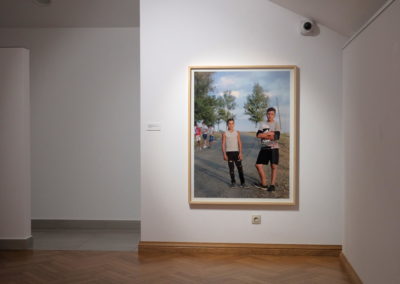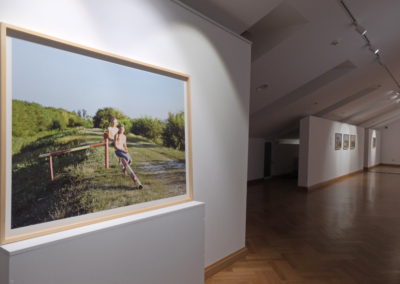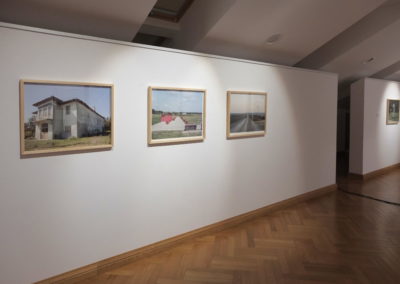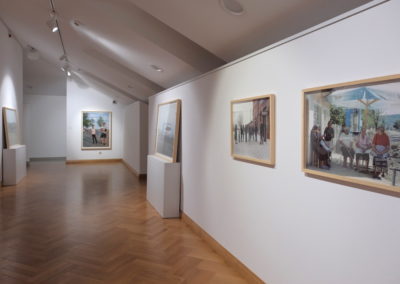About Matei Bajenaru
Matei Bejenaru is a visual artist who lives and works in Iaşi, where he teaches photography and video art at the “George Enescu” University of Arts. In his projects, through photography, video, performance and inter-media installations, he analyzes how the ways of economic production, technological knowledge, mentalities and lifestyles have changed in the last two decades in the post-communist countries. The Romanian workers’ immigration towards the West was analyzed in his artistic projects Travel Guide and Maersk Dubai, selected for various international exhibitions, like the ones in Tate Modern, Level 2 Gallery in London in 2007, The Taipei Biennial in 2008.
His choral music experimental project, started in 2010, Songs for a Better Future, was presented at The Drawing Room and Tate Modern in London, Western Front la Vancouver, Kuenstlerhaus Buchsenhausen Innsbruck, Laakteater Haga. The most recent episode of this project, Ode of the Matter, was exhibited at The National Museum of Contemporary Museum in Bucharest and at the Art Encounters Biennial in Timişoara.
Read more: https://www.ancapoterasu.com/artists/matei-bejenaru/
Matei Bejenaru / PRUT
Documentary photography exhibition at National Art Museum of Moldova
The exhibition is conceived by Matei Bejenaru together with art critic Alina Șerban
20.10-03.12.2023 / National Museum of Art of Moldova
A key figure of the 1990s generation, founder of the Periferic Biennale and the Centre for Contemporary Photography in Iași, Matei Bejenaru lives and works in Iași. His recent projects investigate the materiality of the photographic medium and the politics of representation in the format of documentary. Using analogue photography or film, Bejenaru focuses on the sculptural and conceptual nature of these media and their indexical status, proposing new viewpoints in the interpretation of contemporary realities. His works create, document or comment on life situations which can be assimilated to a conceptual artistic practice through the manner in which he approaches experimental documentary film or reportage photography.
They follow over a long period of time the effects of various economic or technological production processes, make connections with fragments of collective history and speak to us about the changes undergone by the social mentalities in post-communist countries in the last two decades.
The current exhibition is constructed around few testimonial photographic tableaux retained by the artist in analogue format between 2011 and 2023 as part of a constantly growing archive of documentary images that aims to record the profound transformations in the everyday life of the rural areas near the Prut River in Romania. The process of mapping the territory in the Prut River basin, started by Matei Bejenaru in 2011, was determined by his interest in bringing to the fore the distinct dynamics and the problems of a quasi-invisible world located on the eastern border of Romania and the Union European. PRUT succeeds in spotlighting a topic veiled in the local public agenda which, in Bejenaru’s eye, offers an authentic foray into the complexity of the realities lived by an important part of the population in the rural context in Romania. The special tone of this series—due to the particularity of the creative working process and the adopted aesthetics, that of the tableau-photography—is the result of a subtle negotiation of the relationships between the image, temporality, the inner anthropological dimension of the photographic vision and the pictorial quality of the information collected by the camera. Thus, the PRUT project challenges a kind of rudimentary reading of the rural territory from the perspective of themes such as poverty, migration, labour, habitation and the need to come to terms with the demands of the free market, as well as the journalistic sensationalism.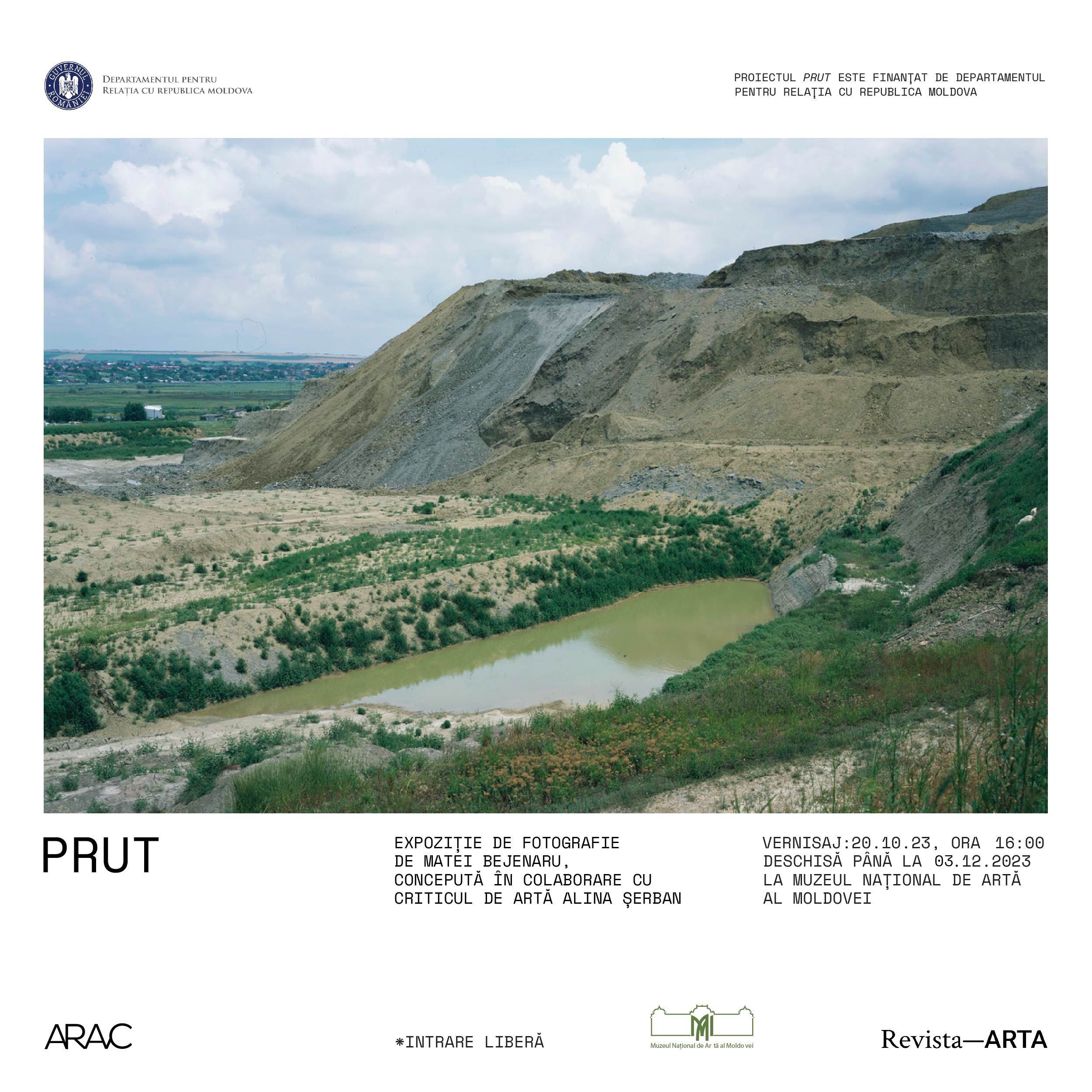
The insistence shown by the artist in reading certain fragments of daily life, the seriousness with which he approaches the reality of the small hamlets and villages stringing along the Romanian side of the river, his wholehearted involvement in acquiring knowledge about the social transformations occurring in people’s everyday lives, as well as the decency he shows in his interactions with them, point to the twofold regimen of the project undertaken by Matei Bejenaru.
On the one hand, PRUT is a personal, internalised foray into a world shaken by the syncopated modernisation of the last years, by the removal, against the troubled background of the Romanian post-socialist world, of an entire social class that has remained faithful to its locus, but has found itself underrepresented, left to find its own forms of adaptation and instruments of survival. On the other hand, the PRUT project functions like a field research, with a very thin line separating art from anthropology.
PRUT expands the role of photography as an artistic medium through which the artist interacts with a reality becoming, implicitly, a form of personal notation dedicated to some subjects Bejenaru encounters during his travels. Thus, his energy is channelled towards creating a photography that retains as much as possible of the intricacy of the subject, but which is attentive to the way we gaze it. It is the act of photographing that is important for Matei Bejenaru, as well the ethics of representation. Photography functions as an interstice, a bridge between the artist and the world, a link both emotional and temporal, which informs us about the status of the contemporary rural world, a world that has lost its traditional identity becoming marginal, peripheral.
With Matei Bejenaru, the politics of photography and implicitly his specific way of gazing underline an engaged content which refuses idealisation of the rural universe which, instead, locates it inside a collective narrative and culture. The world of the PRUT is not that of an “abstract humanity,” but the world of certain communities whose way of thinking, (re)acting and living reflects a mix of motivations which reveal the uncertain relationship between the old historical order and the new one. In other words, the rural in which Bejenaru is interested is one of paradoxes, where the unfinished project of modernity spills over the present its own fears, unfulfillments, expectations.
The project PRUT is funded by the Department for the Relations with the Republic of Moldova. / https://drrm.gov.ro/w/
ARAC is a non-profit organization founded in June 2012, in order to produce and promote contemporary art in Romania and abroad. The initiative of the 58 Plantelor Residency belongs to Anca Poterasu, gallerist and ARAC President. The first edition of the Residency took place in 2015 and it was financed through a grant offered by Norway, Iceland, Liechtenstein and the Romanian Government.


